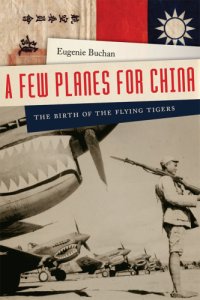
Ebook: A few planes for China: the birth of the Flying Tigers
- Tags: Military operations Aerial, Military participation--American, Sino-Japanese War 1937-1945--Aerial operations, Sino-Japanese War 1937-1945--Participation American, China. -- Kong jun. -- American Volunteer Group, Sino-Japanese War 1937-1945 -- Participation American, Sino-Japanese War 1937-1945 -- Aerial operations, Military participation -- American
- Year: 2017
- Publisher: University Press of New England
- City: Lebanon NH
- Language: English
- epub
Chiang's rotten Air Force -- Burma roads -- Plane aid -- Bruce Leighton's guerrilla air corps -- Business, the Chinese way -- T.V. Soong's mission to Washington -- A few planes for China -- Roosevelt's dilemma -- Bombing Japan -- Tomahawks for China -- Robbing Churchill to pay Chiang -- The private military contractor -- Diplomatic skirmishes -- Reinforcing the Philippines -- Favoring Currie -- The mercenary's contract -- Recruiters and recruited -- The international air force -- Staying on in Burma -- Squabbling over bullets -- AVG summer camp -- The short-term air program for China -- Currie gets in a jam -- Magruder's mission -- Countdown to war -- Epilogue.;"On December 7, 1941, a surprise attack on Pearl Harbor plunged the United States into armed conflict with Japan. In the first three months of the war the Japanese seemed unbeatable as they seized American, British, and European territory across the Pacific: the Philippines, Singapore, Hong Kong, the Dutch East Indies. Nonetheless, in those dark days, the U.S. press began to pick up reports about a group of American mercenaries who were bringing down enemy planes over Burma and western China. The pilots quickly became known as the Flying Tigers and a legend was born. After Pearl Harbor, the Japanese seemed unbeatable. Then some American pilots-- members of the American Volunteer Group, which became known as the Flying Tigers-- started to bring down enemy planes over Burma and western China. But how did they happen to be in the British colony of Burma? The standard explanation is that in 1940 their commander, Colonel Claire Chennault, convinced the Roosevelt administration to set up a covert air force that could attack the Japanese in China and possibly bomb Tokyo even if the United States and Japan were not yet at war. In [this book], Eugenie Buchan draws on wide-ranging new sources to overturn seventy years of received wisdom about the genesis of the Flying Tigers. This strange experiment in airpower was accidental rather than intentional; haphazard decisions and changing threat perceptions both shaped its organization and deprived it of resources. In the end it was the British-- more than any American in or out of government-- who got the Tigers off the ground. On the eve of Pearl Harbor, the most important man behind the Flying Tigers was not Claire Chennault but Winston Churchill."--Amazon.com.
Download the book A few planes for China: the birth of the Flying Tigers for free or read online
Continue reading on any device:

Last viewed books
Related books
{related-news}
Comments (0)